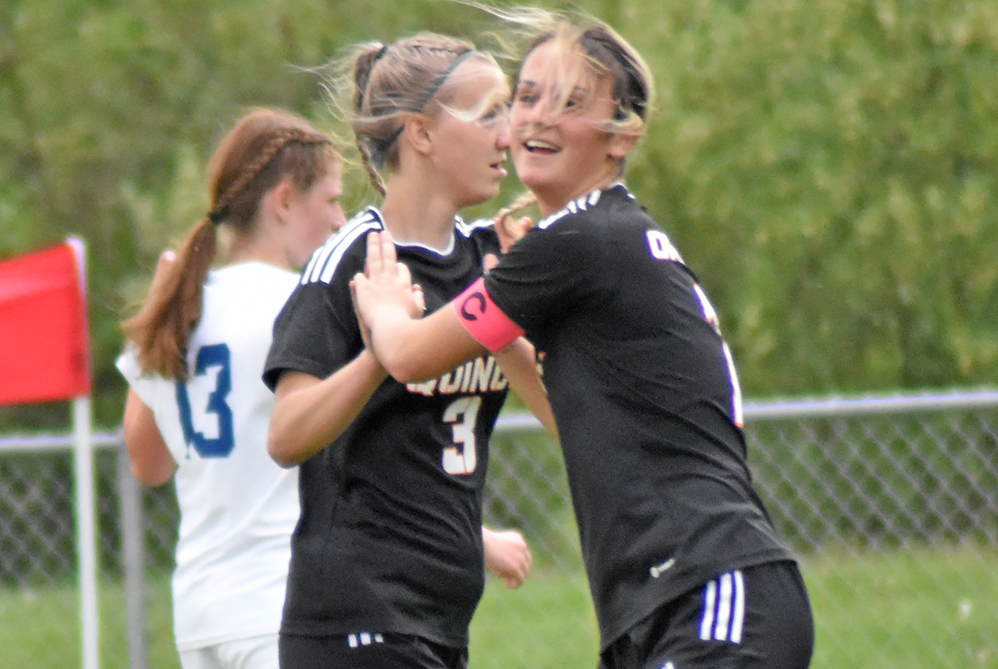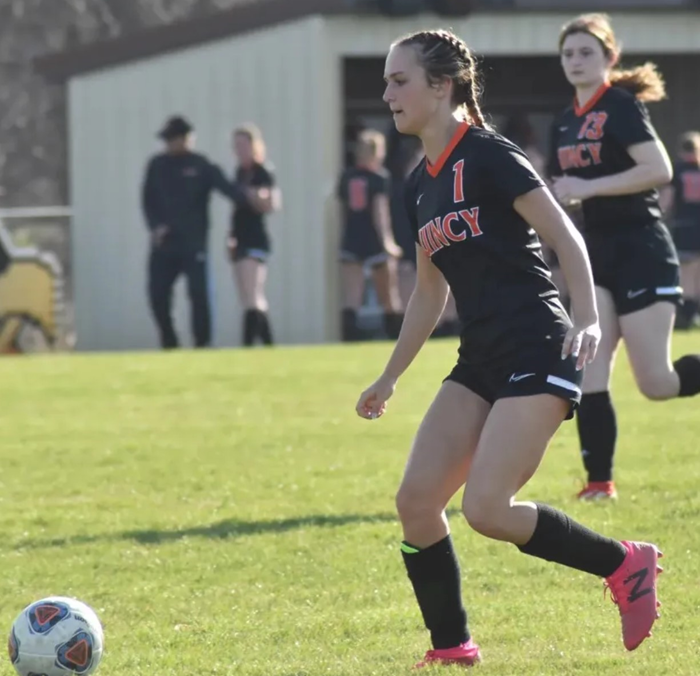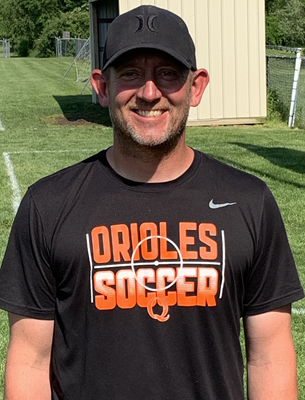
Casting Lines for Future Tournaments
August 12, 2016
By Jack Roberts
MHSAA Executive Director
The MHSAA is best known to the public for the tournaments it conducts to conclude the fall, winter and spring seasons each school year.
These tournaments, the first and largest program of the MHSAA, have survived the Vietnam War, the Korean conflict and two World Wars. They have survived the technology bubble, the housing collapse, the energy crisis and the Great Depression.
MHSAA tournaments existed at the dawn of aviation and at the time of our nation’s lunar landing. Popes, presidents and governors have changed and changed again and again, and MHSAA tournaments roll on year after year.
But the sense of tradition and permanence and inevitability of MHSAA tournaments doesn’t dissuade us from asking questions about our tournaments, even some of the most basic questions. Here are two.
Question #1
I have long been and will always be an advocate for a Ryder Cup format for the MHSAA Golf Finals, and a team tennis approach to the MHSAA Tennis Finals; but 90 years of tradition is hard to overcome. Might this be a more exciting format? Could it be co-ed? Could it reverse the decline in boys tennis participation, and increase girls golf participation? Wouldn’t it be fun to try?
Periodically, the International Olympic Committee requires each of the designated Olympic sports to defend its status, to state its case why the sport should remain a part of the Olympic program. Then, after a series or votes that retain one sport at a time, the IOC drops the sport that makes the weakest case. It does so to make room for one of the previously unlisted sports that makes the best case for inclusion.
This would appear to keep the existing Olympic sports on their toes, and to keep the Olympic movement fresh and reflective of modern trends in sports.
While I would not enjoy the controversy, I can see the potential for some positive results if the MHSAA were to invoke the same policy for determining the 14 tournaments it will provide for girls and the 14 for boys.
This might cause us to consider more deeply what a high school sport should look like, or at least what an MHSAA tournament sport should stand for.
On the one hand, we might be inclined to drop tournaments for those sports that involve mostly non-faculty coaches and non-school venues, or require cooperative programs to generate enough participants to support a team, or resort almost entirely to non-school funding, or cater to individuals more than teams.
Or perhaps this process would cause policymakers to forget traditional thinking and ask: “In this day and age, should we shake off traditional notions of sport and consider more where modern kids are coming from?” That might mean fewer team sports and more individual sports, more “extreme” sports like snowboarding and skateboarding, and more lifetime sports, meaning not just golf and tennis and running sports, but also fishing and even shooting sports.
Currently, MHSAA policy states that the MHSAA will consider sponsorship of a tournament series for any sport which 64 member schools conduct on an interscholastic basis as a result of action by the governing boards of those schools.
Should the only question be how many schools sponsor a sport, or must an activity also have certain qualities and/or avoid certain “defects?” What should an MHSAA tournament sport look like and stand for?
Question #2
Bristling from criticism that his association is a money-grabbing exploiter of children, my counterpart in another state said, “If we were running our programs just to make money, we would do very many things very differently.” I knew exactly what he meant.
Because we care about the health and welfare of students, because we mean what we say that the athletic program needs to maximize the ways it enhances the school experience while minimizing academic conflicts, and because we try to model our claim that no sport is a minor sport when it comes to its potential to teach young people life lessons, we operate our programs in ways that make promoters, marketers and business entrepreneurs laugh, cry or cringe.
If money were the only object, we would seed and select sites to assure the teams that attracted the most spectators had the best chance to advance in our tournaments, regardless of the travel for any team or its fan base. If money were the only object, we would never schedule two tournaments to overlap and compete for public attention, much less tolerate three or four overlapping events. If money were the only object, we would allow signage like NASCAR events and promotions like minor league baseball games.
Those approaches to event sponsorship may not be all wrong; they’re just not all right for us. And we will live with the consequences of our belief system.
During a typical school year, more than 20 percent of the MHSAA’s 2,097 District, Regional and Final tournaments lose money. Not a single site in golf, skiing or tennis makes a single penny. In no sport did every District, Regional and Final site have revenue in excess of direct expenses.
In fact, in only three sports – boys and girls basketball and football – is revenue so much greater than direct expenses overall that it helps to pay for all the other tournaments in which the MHSAA invests.
That’s right: invests. When we present our budget to our board, we talk about the MHSAA’s investment in providing tournament opportunities in all those sports and all those places that cannot sustain the cost of those events on their own. How much is this investment worth to students, schools and society?
These two are core questions that require our focus far in advance of talk about scheduling, site selection, seeding and the myriad matters that too often hijack our time and attention.

Hollenbaugh Surpasses Older Sister to Net Quincy's Goal-Scoring Record
By
Scott Hassinger
Special for MHSAA.com
May 28, 2024
QUINCY – Sami Hollenbaugh aspires to become a successful realtor one day, and has the next steps toward that goal mapped out.
 But she already has made a big impact in the world of high school girls soccer as Quincy's striker the last four years.
But she already has made a big impact in the world of high school girls soccer as Quincy's striker the last four years.
Entering last week's 8-0 Division 3 District Quarterfinal win over Springport, Hollenbaugh had scored a school-record 89 career goals. Sami's older sister Emily Hollenbaugh, a 2020 graduate, previously held the mark.
Hollenbaugh's exposure to soccer began as a 5-year-old in the local AYSO programs in Quincy and Coldwater. A year ago, Sami joined the Jackson Jaguars, a travel soccer team, to prepare for her senior year.
"My mom put all us kids into AYSO when I was younger. That's where it all started, and I was also playing softball back then. After a while, I decided just to play soccer, and I've stuck with it ever since,” Sami Hollenbaugh said. “I just like scoring goals,"
Another of her favorite aspects is getting her teammates involved.
"I enjoy other girls who don't have as many opportunities to get chances to shoot and score. I just always want to do what's best for my team," Hollenbaugh said.
Hollenbaugh's two biggest influences are her older sister and her mother Melanie Hollenbaugh.
 "In my freshman and sophomore years, I compared myself a lot to Emily, but then I realized I didn't have to do (that) and just went out to be as competitive as I could,” Sami Hollenbaugh said. “My mom also keeps our stat book, and she's real good about keeping me upbeat and not letting me get down on myself during a match.”
"In my freshman and sophomore years, I compared myself a lot to Emily, but then I realized I didn't have to do (that) and just went out to be as competitive as I could,” Sami Hollenbaugh said. “My mom also keeps our stat book, and she's real good about keeping me upbeat and not letting me get down on myself during a match.”
Quincy (14-4-1) won the Independent Soccer League and looks to capture a second-straight District championship later this week. The Orioles' 2023 season ended with a 7-0 loss to Williamston in the Regional Semifinals.
Hollenbaugh is one of four seniors on an 18-player roster dominated by underclassmen. Piper Eby, Grace Lindsley and Tessa Henry are the Orioles' other seniors.
"This year we have a lot of juniors, new girls and freshmen. It took us a little while to get where we are now, and we've improved a lot,” Hollenbaugh said. “Our midfield is very strong, and offensively we're getting more free balls. We spend an incredible amount of time working on shooting at the goal. I try to get as many reps at practice and at home as possible.”
After graduation, Hollenbaugh plans to study interior design at Michigan State University. Collegiate soccer is not on the radar, but she does plan on playing at the intramural level.
The real estate field has always interested her.
"I've just always enjoyed looking at homes. I go on the Zillow app a lot and have always pictured my family or myself living in a particular home," Hollenbaugh said.
Outside of soccer, Hollenbaugh is involved with National Honor Society, student council and is a member of Quincy's Varsity Club.
Olivet (14-3-3) squares off against Battle Creek Pennfield (13-5-1) in Thursday's other District Semifinal match. Winners will meet in Saturday's 10 a.m. title game with the champion advancing to the Williamston Regional.
"We had some early struggles while some of our younger players learned our system. If we can clean a few things up, I feel we have a good shot to keep advancing," said Quincy's eighth-year head coach Ivan Swift, who had been Hollenbaugh's only coach since she began playing the sport.
 "I started coaching AYSO soccer and have been Sami's coach through the various levels. About a year ago, I reached out and suggested to her that she should play travel soccer to get another coach's perspective. That experience has really helped her grow as a player. You can really see the improvement she's made this spring.”
"I started coaching AYSO soccer and have been Sami's coach through the various levels. About a year ago, I reached out and suggested to her that she should play travel soccer to get another coach's perspective. That experience has really helped her grow as a player. You can really see the improvement she's made this spring.”
Andy Hosmer, also head women's coach at Jackson Community College and Brooklyn Columbia Central, coached Hollenbaugh with the Jackson Jaguars.
"Sami is a very driven person. Records are meant to be broken, and I've tried to let her know all season just where she is at to accomplish those,” Swift said. “After she has graduated, I'll do the same for the other girls. Those kinds of situations help motivate your players to improve.”
Even a leg injury hasn't deterred Hollenbaugh from reaching her goals.
"Sami has battled a pulled right quad most of this season, but has only missed one match. It’s benefited her because now she's developed a good shot with her left leg when she needs to and continues to score. I think that just shows her level of determination," Swift said.
Freshman forward/midfield Laura Bostic is second in scoring for the Orioles with 22 goals, to go with 10 assists. "Laura will be a bright spot for years to come," Swift said.
Makenzie Maynard has 13 goals and four assists, Abby Hinds has nine goals and eight assists, and Sade Harges has scored six goals with three assists. Other Quincy standouts include Mackenzie Maynard, Ciaira Paul, Claire Robertson, Danica Swift, Adriana Welch and Ella Bartell.
"We call Abby 'Big Time' because she's got a real strong leg and distributes the ball very well. She takes most of our free and corner kicks and is kind've our point guard in the middle of the field," Ivan Swift said.
The Orioles are experienced on the defensive backline with three juniors playing key roles. Danica Swift, daughter of the head coach, is in her third varsity season as Quincy's starting goalkeeper.
Quincy's biggest wins this season came over Adrian Lenawee Christian 3-1 in conference play, along with a 4-1 victory over Brooklyn Columbia Central.
 Scott Hassinger is a contributing sportswriter for Leader Publications and previously served as the sports editor for the Three Rivers Commercial-News from 1994-2022. He can be reached at [email protected] with story ideas for Berrien, Cass, St. Joseph and Branch counties.
Scott Hassinger is a contributing sportswriter for Leader Publications and previously served as the sports editor for the Three Rivers Commercial-News from 1994-2022. He can be reached at [email protected] with story ideas for Berrien, Cass, St. Joseph and Branch counties.
PHOTOS (Top) Quincy senior striker Sami Hollenbaugh, far right, celebrates with a teammate after scoring this season. (Middle) Hollenbaugh (1) brings the ball upfield during a match. (Below) Eighth-year Quincy varsity girls soccer coach Ivan Swift has been Hollenbaugh's coach since she began playing soccer at age 5. (Action photos by Troy Tennyson/Coldwater Daily Reporter; Swift headshot by Scott Hassinger.)

